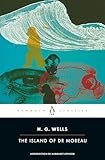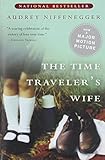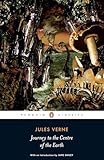 In her introduction to In Other Worlds: SF and the Human Imagination, Margaret Atwood states the book is about her “somewhat tangled” relationship with science fiction from childhood through her teen years, continuing into her university studies and eventual academic career, and culminating as the subject of her numerous book reviews, essays, and subsequently, her fiction, with the novels The Handmaid’s Tale, Oryx and Crake, and The Year of the Flood. However, Atwood’s explorations in the book amount to much more than a personal preoccupation; in a voice that engages by blending storytelling and scholarly investigation, precise illuminations and humor, the author lures us into the subject.
In her introduction to In Other Worlds: SF and the Human Imagination, Margaret Atwood states the book is about her “somewhat tangled” relationship with science fiction from childhood through her teen years, continuing into her university studies and eventual academic career, and culminating as the subject of her numerous book reviews, essays, and subsequently, her fiction, with the novels The Handmaid’s Tale, Oryx and Crake, and The Year of the Flood. However, Atwood’s explorations in the book amount to much more than a personal preoccupation; in a voice that engages by blending storytelling and scholarly investigation, precise illuminations and humor, the author lures us into the subject.


 In Other Worlds is composed of three parts. The first contains three chapters based on Atwood’s Ellmann Lectures delivered in 2010, published here for the first time. The second section collects some of her other writings on specific works, ranging from the more obscure She by H. Rider Haggard to the Victorian classic, The Island of Doctor Moreau by H. G. Wells and more contemporary novels such as Kazuo Ishiguro’s Never Let Me Go. The third and final part of the book showcases five of Atwood’s own sci-fi pieces; that the selections in the capstone section are brief and varied, offering a taste of the author’s imaginings in the genre and no more, are a testament to the book’s balance and sensibility. We’re left wanting more, and lucky for us, the author indulges our piqued intellectual appetite in her appendices which contain “An Open Letter from Margaret Atwood to the Judson Independent School District” addressing the district’s ban of The Handmaid’s Tale. The letter serves as a succinct example of the logical reasoning, wit, and matter-of-fact tone Atwood maintains throughout the book—a tone which entertains as well as informs.
In Other Worlds is composed of three parts. The first contains three chapters based on Atwood’s Ellmann Lectures delivered in 2010, published here for the first time. The second section collects some of her other writings on specific works, ranging from the more obscure She by H. Rider Haggard to the Victorian classic, The Island of Doctor Moreau by H. G. Wells and more contemporary novels such as Kazuo Ishiguro’s Never Let Me Go. The third and final part of the book showcases five of Atwood’s own sci-fi pieces; that the selections in the capstone section are brief and varied, offering a taste of the author’s imaginings in the genre and no more, are a testament to the book’s balance and sensibility. We’re left wanting more, and lucky for us, the author indulges our piqued intellectual appetite in her appendices which contain “An Open Letter from Margaret Atwood to the Judson Independent School District” addressing the district’s ban of The Handmaid’s Tale. The letter serves as a succinct example of the logical reasoning, wit, and matter-of-fact tone Atwood maintains throughout the book—a tone which entertains as well as informs.

 But I’ve ventured ahead of myself. What has Atwood provided us with in this volume of various collected works that is so compelling? Many in her audience will be literary readers and writers whose prior familiarity with “science fiction,” “speculative,” “sword and sorcery fantasy,” and “slipstream” will be limited at best, confined to long-ago high school reading assignments of 1984 and perhaps Fahrenheit 451. In Other Worlds is concise in its arguments, perhaps deceptively so, for the questions Atwood raises and the points she articulates run deep. The crux of her treatise resides in the three Ellmann lectures-turned-essays. In the first, “Flying Rabbits,” she traces back the comic book heroes and heroines of her youth to their counterparts in ancient mythology, and while this connection isn’t in itself a terribly surprising one, the particularities prove fascinating (how many have seriously pondered Wonder Woman’s lineage to Diana the Huntress, for example? Or exactly how the superpowers and shortcomings of mythological heroes are conferred on their comic book cousins?) As the author points out, “For every Achilles there’s a heel, a condition of vulnerability; for every Superman there’s a kryptonite, a force that negates special powers.” Perhaps the most memorable analysis in this chapter is Atwood’s Jungian deconstruction of Batman, his nemeses, and Robin in the sub-section “The Double Identity,” doubles being a favorite device of Victorian novels with fantastical figures like Dorian Gray, Jekyll and Hyde, to name a few; in the case of Batman, the Penguin and the Joker are Bruce Wayne’s “shadow” selves. Other subsections of this essay are “The Outfits” (on how special garments and talismans equate with shamanistic powers), “The Flying” (on the human desire to overcome bodily restrictions), and “Transformation and Tricks,” in which she peels back the why behind the human psyche’s need for these other worlds, superpowers, and all the mischief that goes along with the territory through the lens of her childhood self: “It was the notion of deceiving people that we really liked — the idea that you could walk around among unsuspecting adults — the people on the street in the comic books — knowing something about yourself that they didn’t know: that you secretly had the power to astonish them.” Atwood’s connecting the dots throughout our cultural history as to how these “otherworldly” facets appeal and astonish makes for an enthralling ride.
But I’ve ventured ahead of myself. What has Atwood provided us with in this volume of various collected works that is so compelling? Many in her audience will be literary readers and writers whose prior familiarity with “science fiction,” “speculative,” “sword and sorcery fantasy,” and “slipstream” will be limited at best, confined to long-ago high school reading assignments of 1984 and perhaps Fahrenheit 451. In Other Worlds is concise in its arguments, perhaps deceptively so, for the questions Atwood raises and the points she articulates run deep. The crux of her treatise resides in the three Ellmann lectures-turned-essays. In the first, “Flying Rabbits,” she traces back the comic book heroes and heroines of her youth to their counterparts in ancient mythology, and while this connection isn’t in itself a terribly surprising one, the particularities prove fascinating (how many have seriously pondered Wonder Woman’s lineage to Diana the Huntress, for example? Or exactly how the superpowers and shortcomings of mythological heroes are conferred on their comic book cousins?) As the author points out, “For every Achilles there’s a heel, a condition of vulnerability; for every Superman there’s a kryptonite, a force that negates special powers.” Perhaps the most memorable analysis in this chapter is Atwood’s Jungian deconstruction of Batman, his nemeses, and Robin in the sub-section “The Double Identity,” doubles being a favorite device of Victorian novels with fantastical figures like Dorian Gray, Jekyll and Hyde, to name a few; in the case of Batman, the Penguin and the Joker are Bruce Wayne’s “shadow” selves. Other subsections of this essay are “The Outfits” (on how special garments and talismans equate with shamanistic powers), “The Flying” (on the human desire to overcome bodily restrictions), and “Transformation and Tricks,” in which she peels back the why behind the human psyche’s need for these other worlds, superpowers, and all the mischief that goes along with the territory through the lens of her childhood self: “It was the notion of deceiving people that we really liked — the idea that you could walk around among unsuspecting adults — the people on the street in the comic books — knowing something about yourself that they didn’t know: that you secretly had the power to astonish them.” Atwood’s connecting the dots throughout our cultural history as to how these “otherworldly” facets appeal and astonish makes for an enthralling ride.

 The subsequent chapters from the Ellmann Lectures continue this juicy foray into what makes other worlds, including utopias and dystopias, tick. Whether or not you consider yourself a fan of such works, Atwood’s investigation into archetypes, the influences of the 19th-century novel and romance on their sci-fi and speculative descendents and larger questions about storytelling itself prove an illuminating read. In “Burning Bushes,” she delves into the ways myths are created anew and emerge in other art forms; “For every question that myths address, SF has addressed also,” Atwood states. Thus follows a brief history of the science fiction genre as it evolved from its predecessor, scientific romances as the stories of H. G. Wells were dubbed, but Atwood’s closer introspection into the novel results in greater revelations. She reminds us that novels, preoccupied as they are with realism, are not the only types of prose works, something we are inclined to forget since the term “novel” fell into popularity. The speculative fiction of Jules Verne, the sci-fi of Wells, along with recent titles such as Audrey Niffenegger’s The Time Traveler’s Wife and Yann Martel’s Life of Pi, are all in the direct tradition of the romance, not the novel, according to Atwood. There follows a nuts-and-bolts breakdown of what science fiction narratives can do that traditional novel can’t, suggesting that this is the reason for Western mythology’s migration to “Planet X” — because we believe the fantastical can take place there, whether the story is about an alternative social structure, the consequences of advanced technology, etc. Consider the Star Wars films and Avatar.
The subsequent chapters from the Ellmann Lectures continue this juicy foray into what makes other worlds, including utopias and dystopias, tick. Whether or not you consider yourself a fan of such works, Atwood’s investigation into archetypes, the influences of the 19th-century novel and romance on their sci-fi and speculative descendents and larger questions about storytelling itself prove an illuminating read. In “Burning Bushes,” she delves into the ways myths are created anew and emerge in other art forms; “For every question that myths address, SF has addressed also,” Atwood states. Thus follows a brief history of the science fiction genre as it evolved from its predecessor, scientific romances as the stories of H. G. Wells were dubbed, but Atwood’s closer introspection into the novel results in greater revelations. She reminds us that novels, preoccupied as they are with realism, are not the only types of prose works, something we are inclined to forget since the term “novel” fell into popularity. The speculative fiction of Jules Verne, the sci-fi of Wells, along with recent titles such as Audrey Niffenegger’s The Time Traveler’s Wife and Yann Martel’s Life of Pi, are all in the direct tradition of the romance, not the novel, according to Atwood. There follows a nuts-and-bolts breakdown of what science fiction narratives can do that traditional novel can’t, suggesting that this is the reason for Western mythology’s migration to “Planet X” — because we believe the fantastical can take place there, whether the story is about an alternative social structure, the consequences of advanced technology, etc. Consider the Star Wars films and Avatar.


 Which brings me to mention the indispensability of In Other Worlds to the prospective writer of any fiction which falls under Atwood’s “otherworldly” umbrella — the writings collected here are by no means comprehensive on the topic, but they will get you on your way if you’re aiming to create a fiction that hails Verne as its predecessor over Austen, and therefore in need of digging up literary roots. Indeed, a chief pleasure in reading In Other Worlds is recalling some of the books one may have curled up with and read as a child, but long forgot; as Atwood recounts her girlhood “low” and “middle brow” encounters with Wonder Woman and Sir Arthur Conan Doyle’s The Lost World, I found myself recalling the SF tomes I’d similarly devoured as a child: Journey to the Center of the Earth, The Time Machine, and countless others. For as much as it is an in-depth study into this category of literature and how it came to be, In Other Worlds is very much a narrative of Atwood’s curiosities as a young reader and, finally, a writer; that this personal thread is an ever-present but subtlety-woven component within these essays is worthwhile to note. By the time one arrives at the chapter on utopias and dystopias, her story-behind-the-story of how she came to write The Handmaid’s Tale and two other works of dystopic fiction is just as revelatory as the analysis and insights throughout. And what drives the impulse to tell such stories? “I’m more inclined to think that it’s unfinished business, of the kind represented by the questions people are increasingly asking themselves: how badly have we messed up the planet? Can we dig ourselves out?” is Atwood’s reply. Only the future will tell.
Which brings me to mention the indispensability of In Other Worlds to the prospective writer of any fiction which falls under Atwood’s “otherworldly” umbrella — the writings collected here are by no means comprehensive on the topic, but they will get you on your way if you’re aiming to create a fiction that hails Verne as its predecessor over Austen, and therefore in need of digging up literary roots. Indeed, a chief pleasure in reading In Other Worlds is recalling some of the books one may have curled up with and read as a child, but long forgot; as Atwood recounts her girlhood “low” and “middle brow” encounters with Wonder Woman and Sir Arthur Conan Doyle’s The Lost World, I found myself recalling the SF tomes I’d similarly devoured as a child: Journey to the Center of the Earth, The Time Machine, and countless others. For as much as it is an in-depth study into this category of literature and how it came to be, In Other Worlds is very much a narrative of Atwood’s curiosities as a young reader and, finally, a writer; that this personal thread is an ever-present but subtlety-woven component within these essays is worthwhile to note. By the time one arrives at the chapter on utopias and dystopias, her story-behind-the-story of how she came to write The Handmaid’s Tale and two other works of dystopic fiction is just as revelatory as the analysis and insights throughout. And what drives the impulse to tell such stories? “I’m more inclined to think that it’s unfinished business, of the kind represented by the questions people are increasingly asking themselves: how badly have we messed up the planet? Can we dig ourselves out?” is Atwood’s reply. Only the future will tell.









